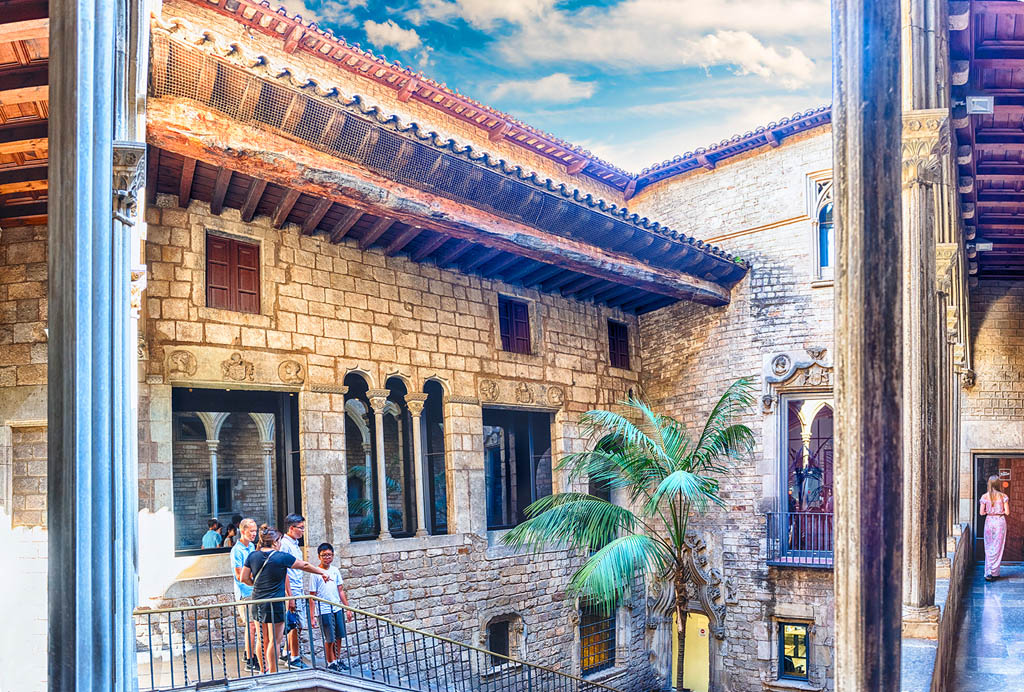TOP SIGHT
MUSEU PICASSO
The setting alone, in five contiguous medieval stone mansions, makes the Museu Picasso unique. The permanent collection is housed in Palau Aguilar, Palau del Baró de Castellet and Palau Meca, all dating from the 14th century. The 18th-century Casa Mauri, built over medieval remains (even some Roman leftovers have been identified), and the adjacent 14th-century Palau Finestres accommodate temporary exhibitions.

History of the Museum
Allegedly it was Picasso himself who proposed the museum’s creation to his friend and personal secretary Jaume Sabartés, a Barcelona native, in 1960. Three years later, the ‘Sabartés Collection’ was opened, since a museum bearing Picasso’s name would have been met with censorship – Picasso’s opposition to the Franco regime was well known. The Museu Picasso we see today opened in 1983. It originally held only Sabartés’ personal collection of Picasso’s art and a handful of works hanging at the Barcelona Museum of Art, but the collection gradually expanded with donations from Salvador Dalí and Sebastià Junyer i Vidal, among others, though most artworks were bequeathed by Picasso himself. His widow, Jacqueline Roque, also donated 41 ceramic pieces and the Woman with Bonnet painting after Picasso’s death.
Sabartés’ contribution and years of service are honoured with an entire room devoted to him, including Picasso’s famous Blue Period portrait of him wearing a ruff.
The Collection
The collection concentrates on the artist’s formative years in Barcelona and elsewhere in Spain, yet there is enough material from subsequent periods to give you a thorough impression of the man’s versatility and genius. Above all, you come away feeling that Picasso was the true original, always one step ahead of himself (let alone anyone else) in his search for new forms of expression. The collection includes more than 3500 artworks, largely pre-1904, which is apt considering the artist spent his formative creative years in Barcelona.
It is important, however, not to expect a parade of his well-known works, or even works representative of his best-known periods. What makes this collection truly impressive – and unique among the many Picasso museums around the world – is the way in which it displays his extraordinary talent at such a young age. Faced with the technical virtuosity of a painting such as Ciència i caritat (Science and Charity), for example, it is almost inconceivable that such a work could have been created by the hands of a 15-year-old. Some of his self-portraits and the portraits of his parents, which date from 1896, are also evidence of his precocious talent.
Las Meninas Through the Prism of Picasso
From 1954 to 1962 Picasso was obsessed with the idea of researching and ‘rediscovering’ the greats, in particular Velázquez. In 1957 he created a series of renditions of the Velázquez masterpiece Las meninas (The Ladies-in-Waiting), now displayed in rooms 12–14. It is as though Picasso has looked at the original Velázquez painting through a prism reflecting all the styles he had worked through until then, creating his own masterpiece in the process. This is a wonderful opportunity to see Las meninas in its entirety in this beautiful space.
Ceramics
What is also special about the Museu Picasso is its showcasing of his work in lesser-known media. The last rooms contain engravings and some 40 ceramic pieces completed throughout the latter years of his unceasingly creative life. You’ll see plates and bowls decorated with simple, single-line drawings of fish, owls and other animal shapes, typical of Picasso’s daubing on clay.